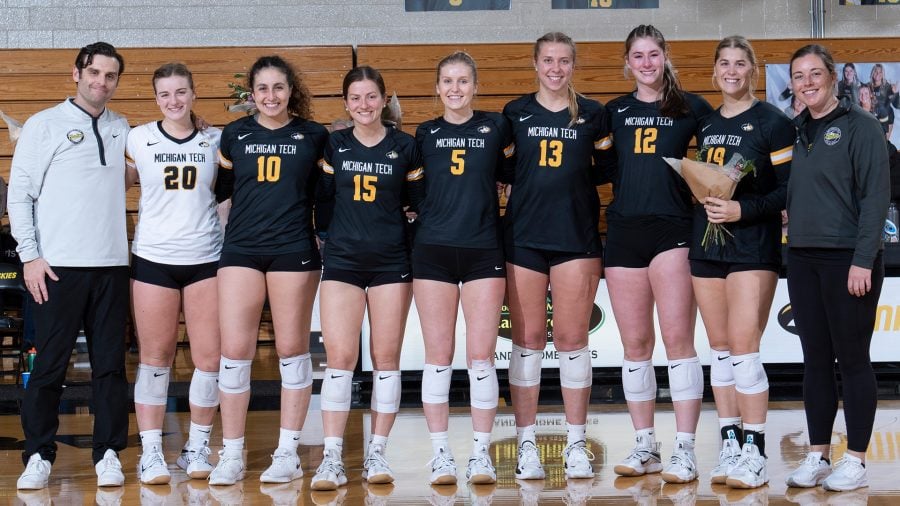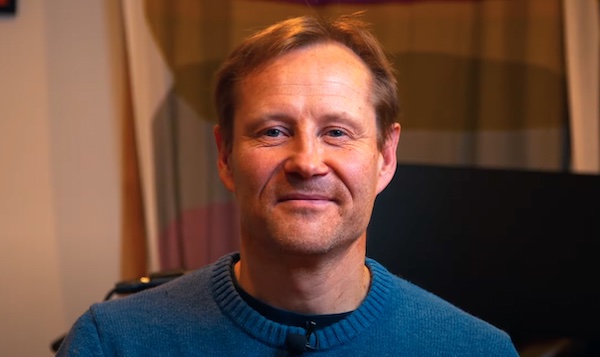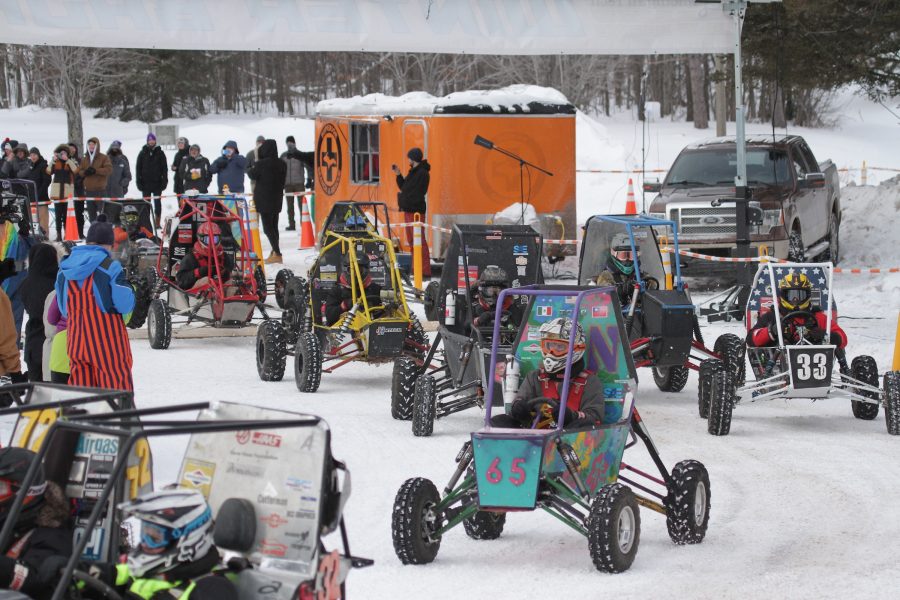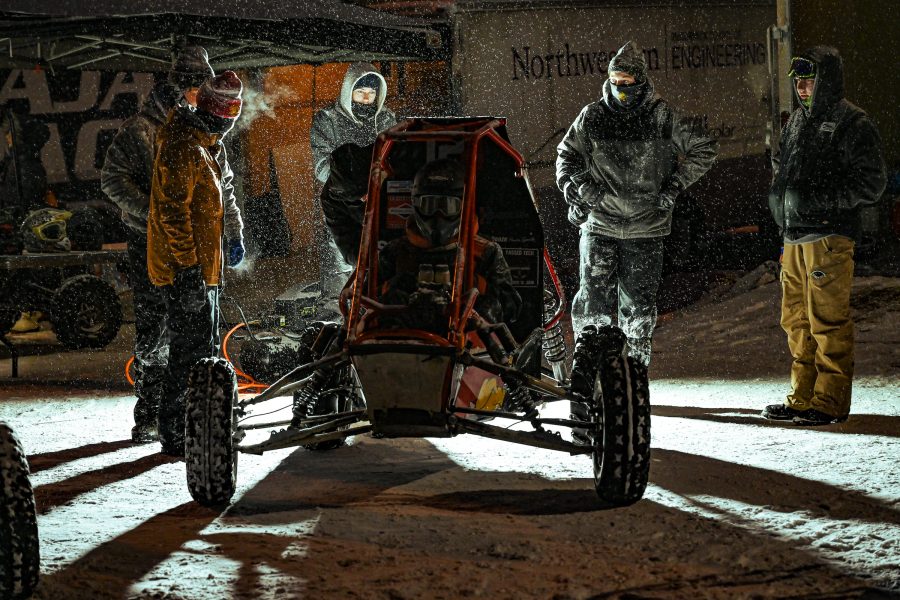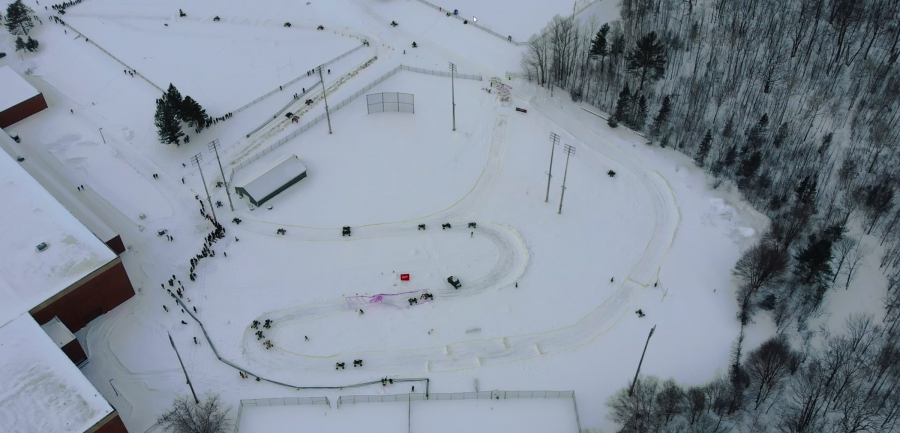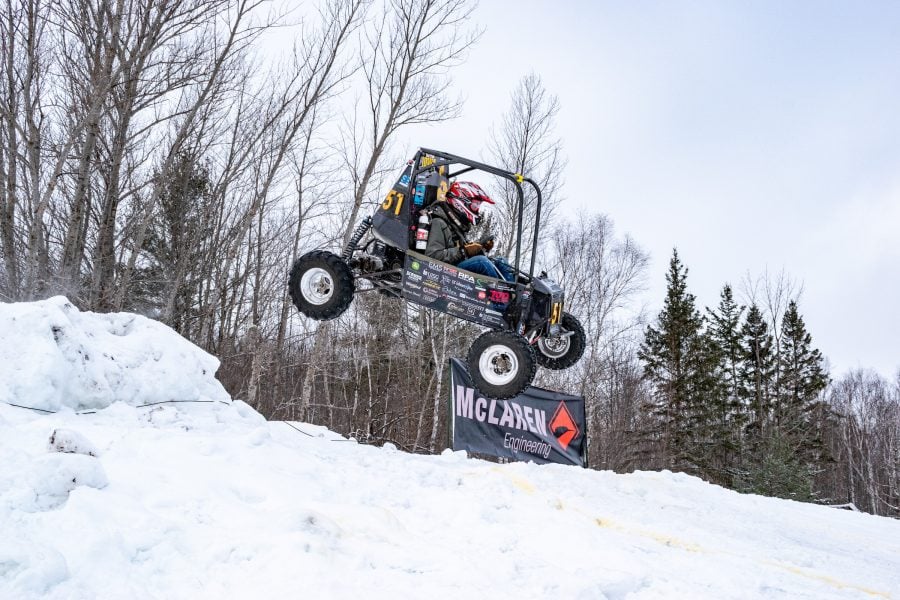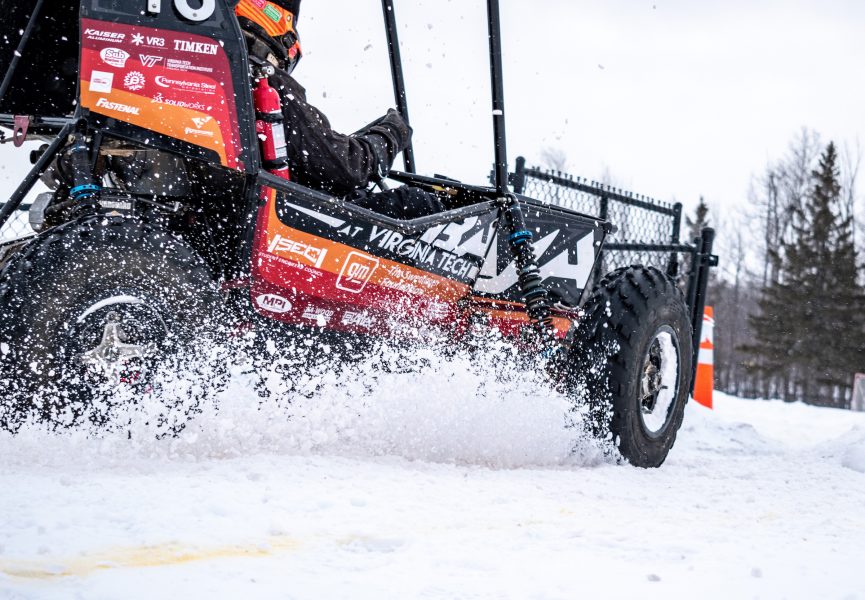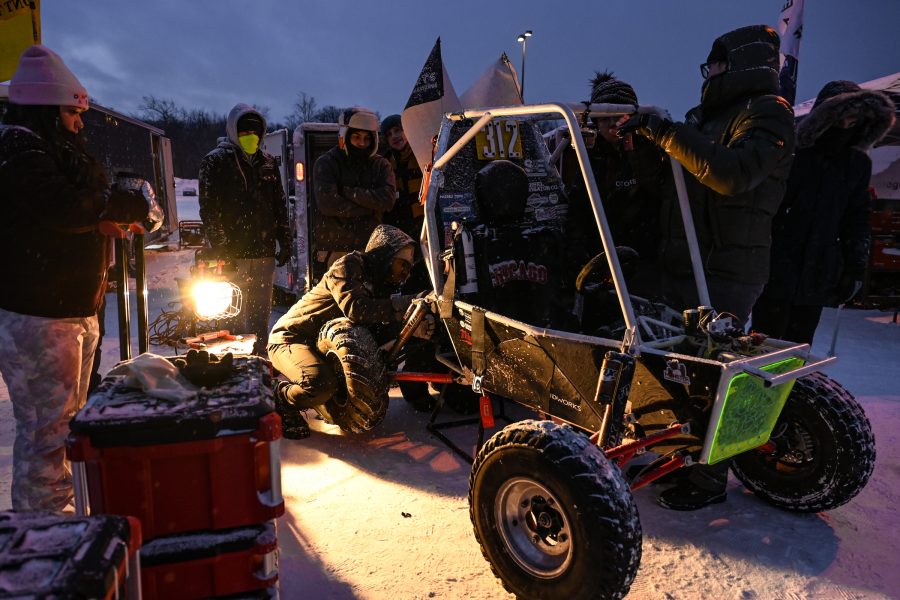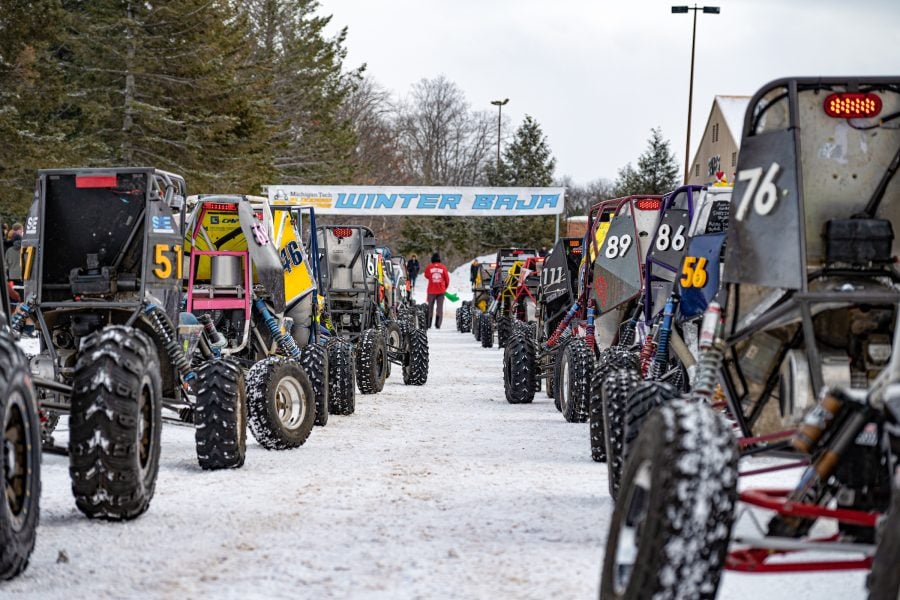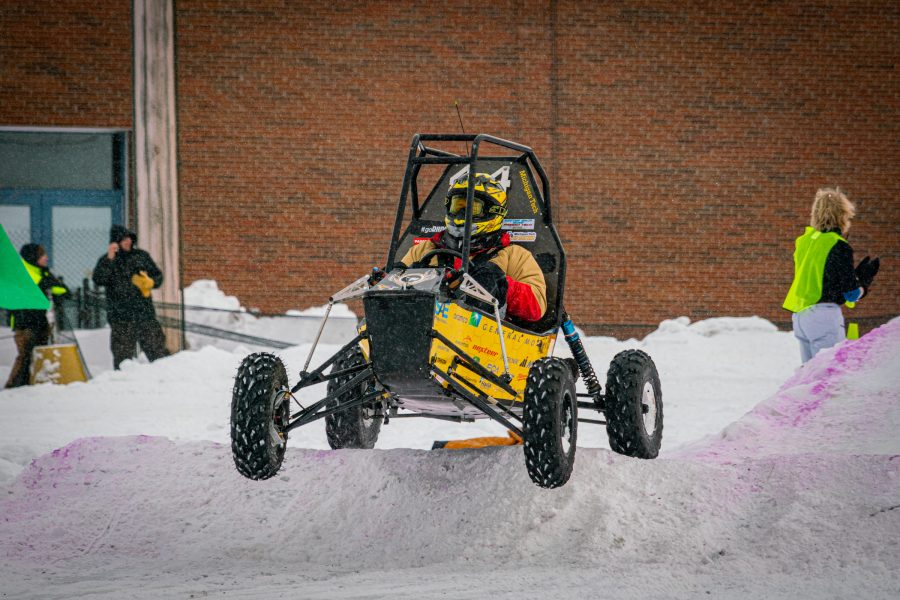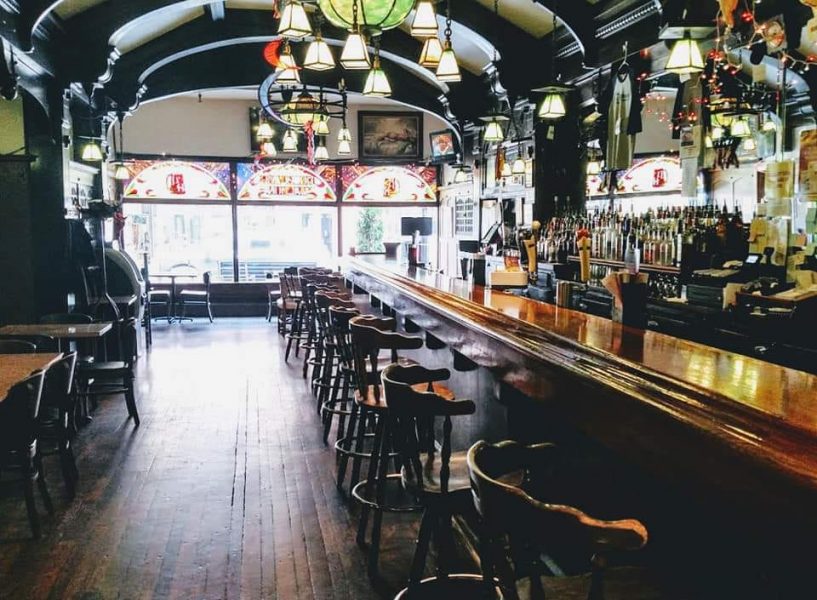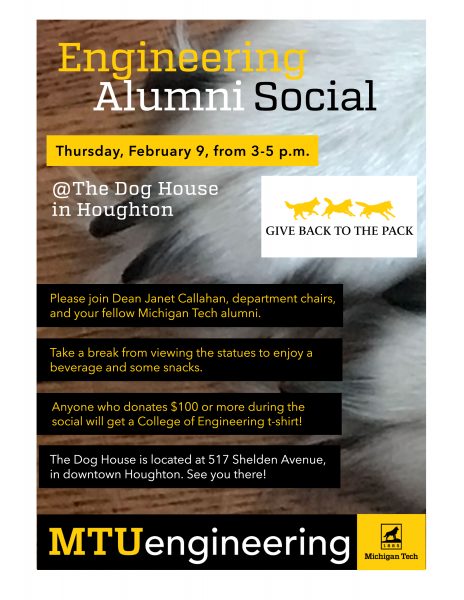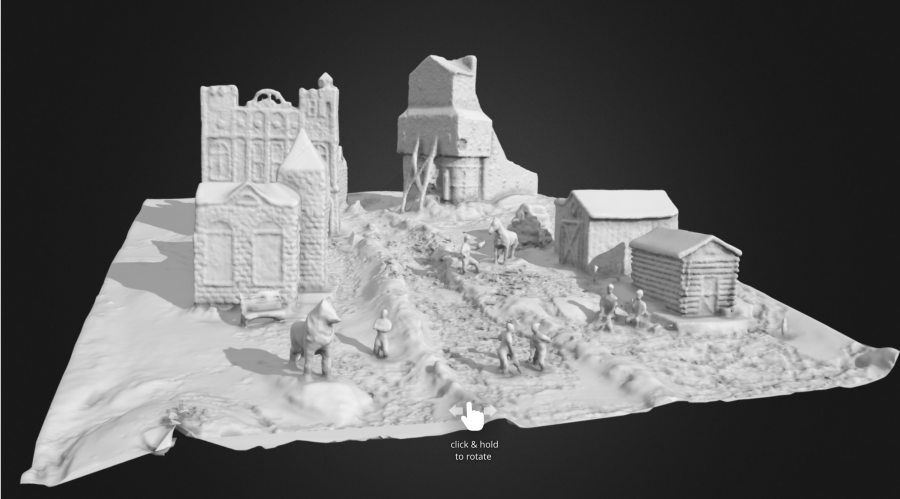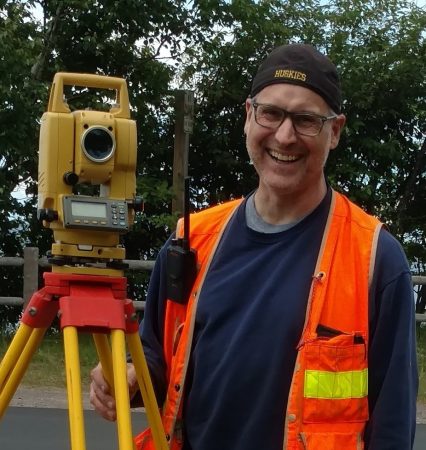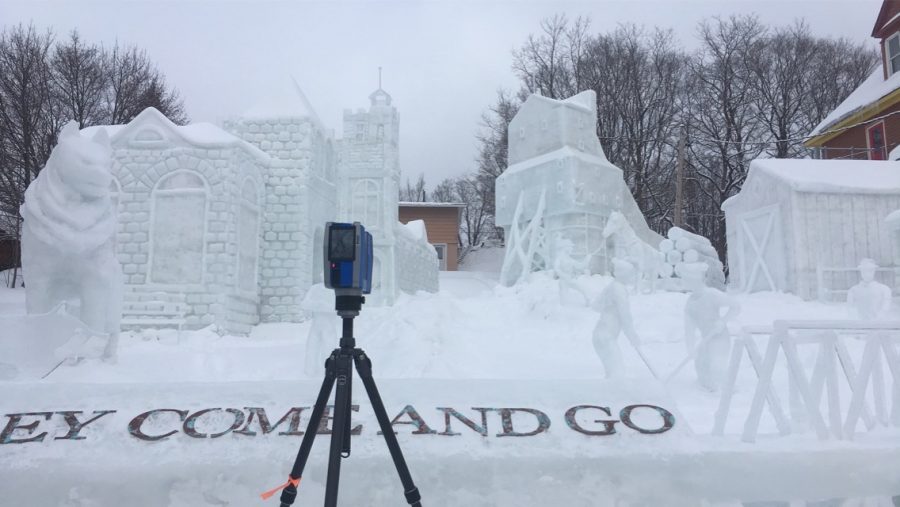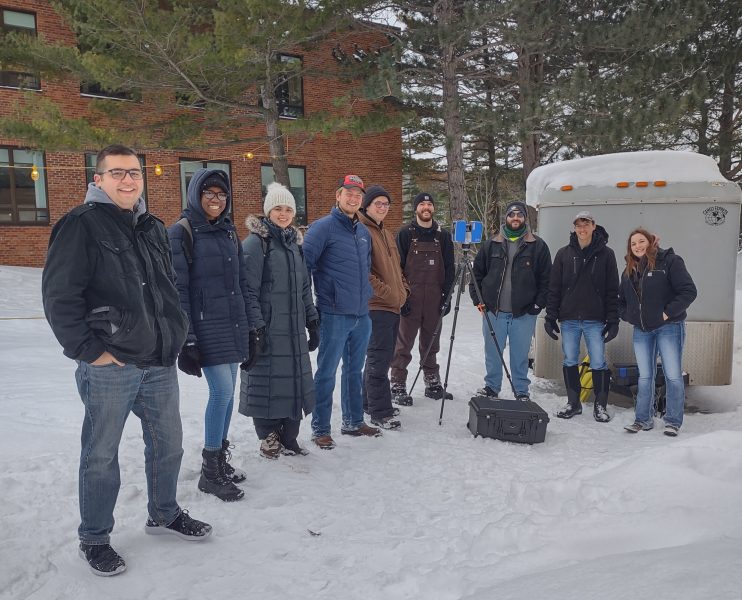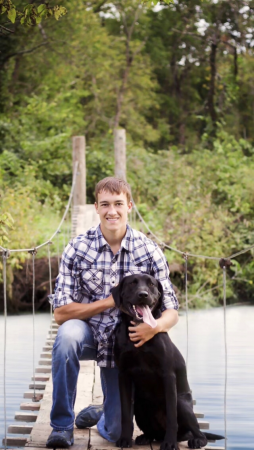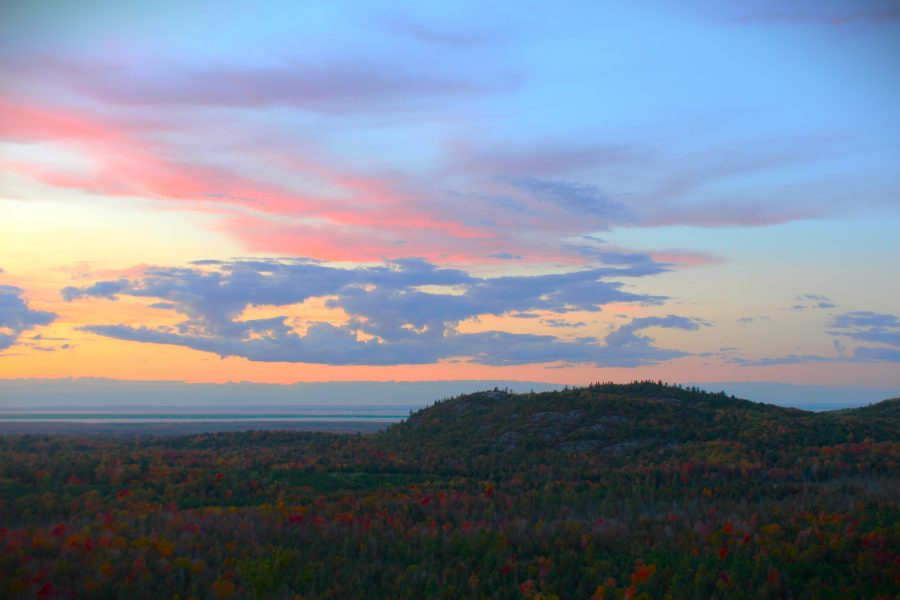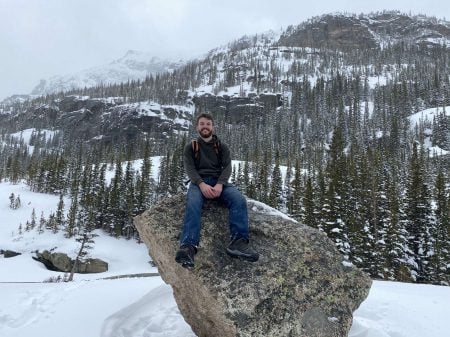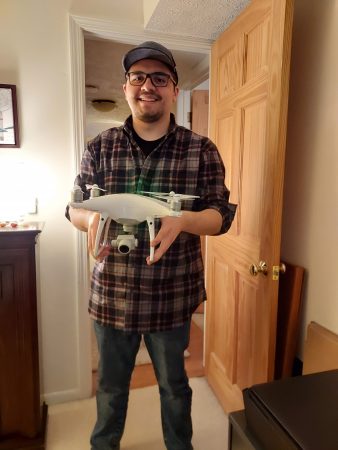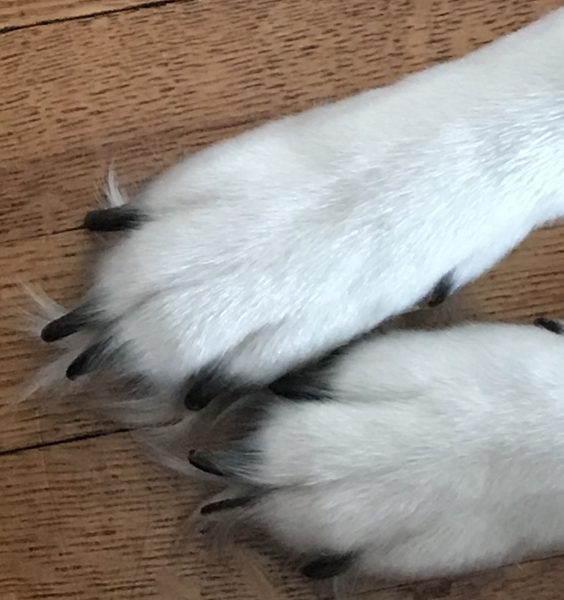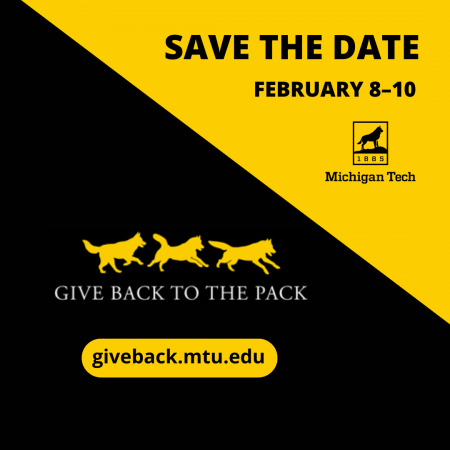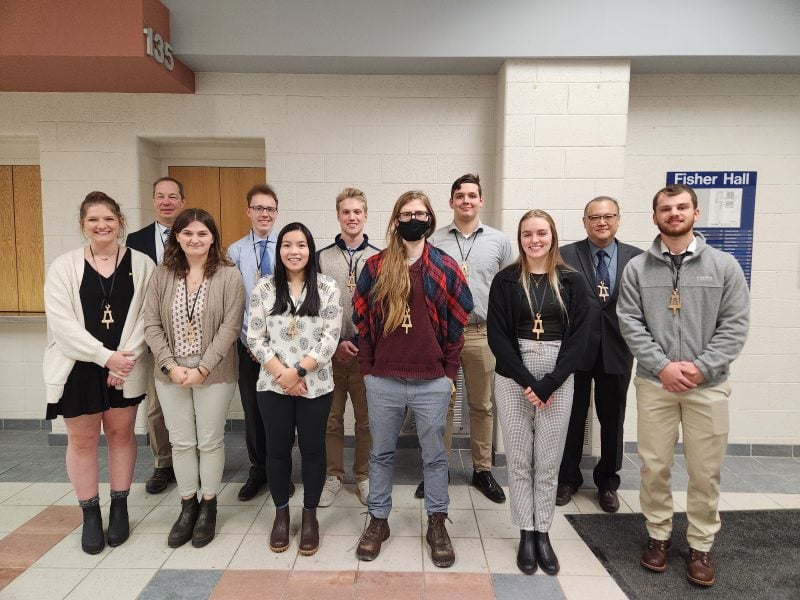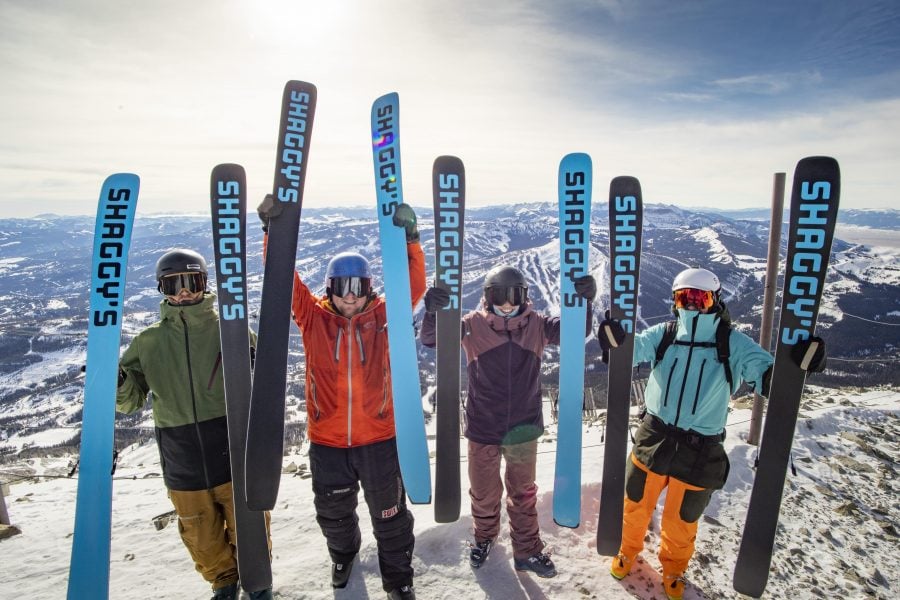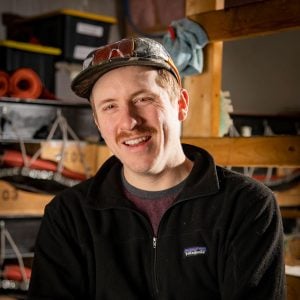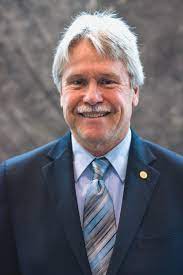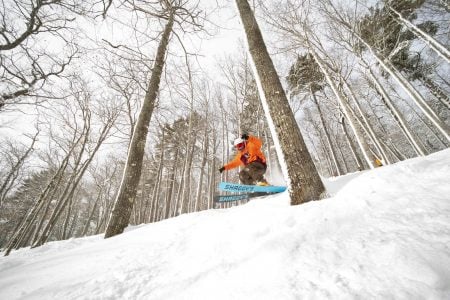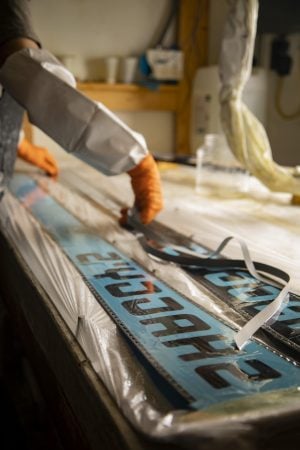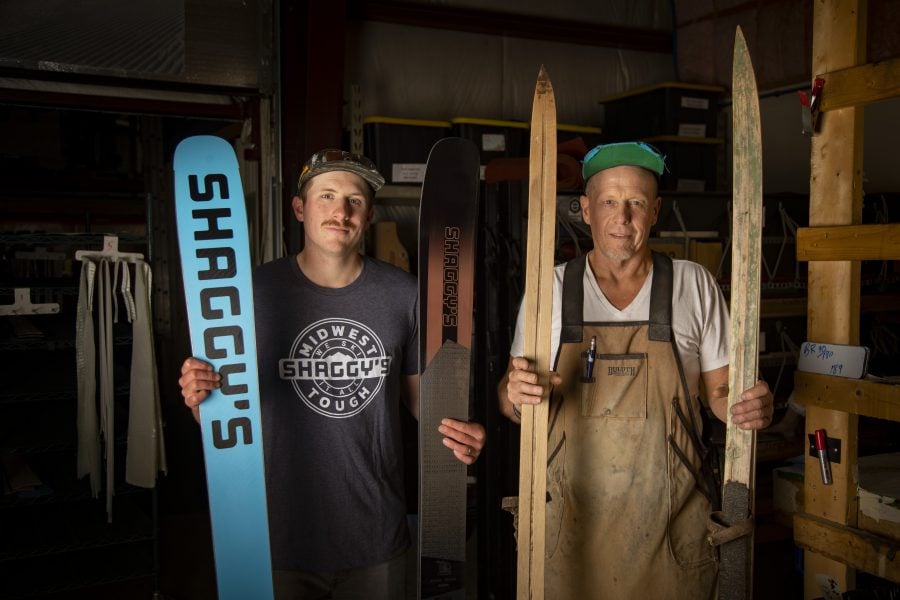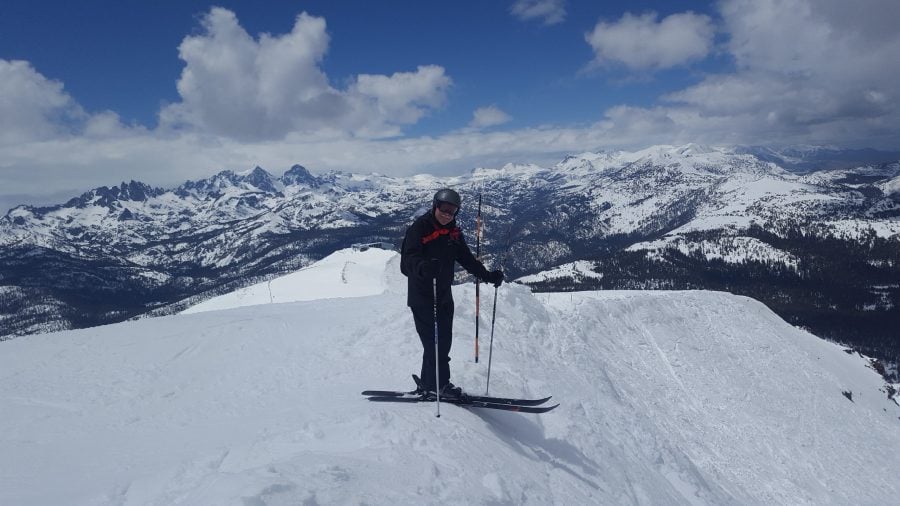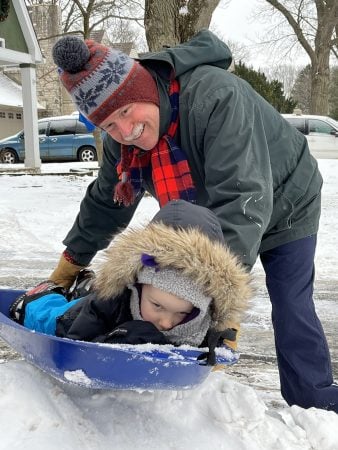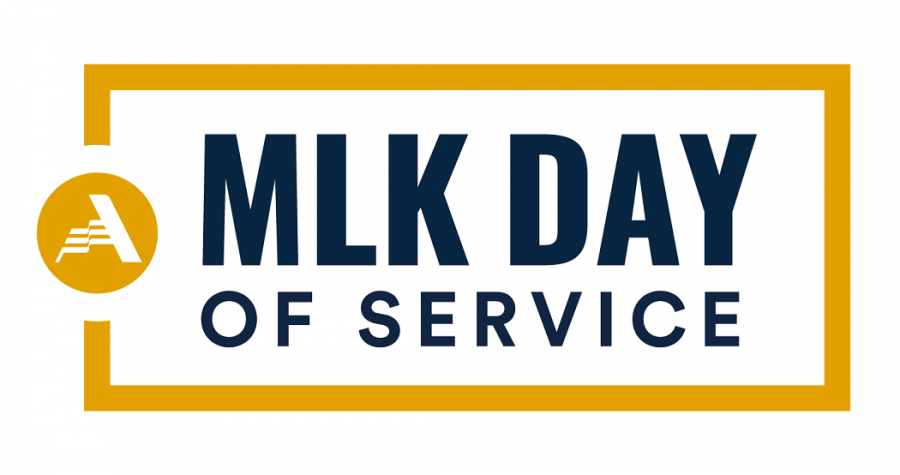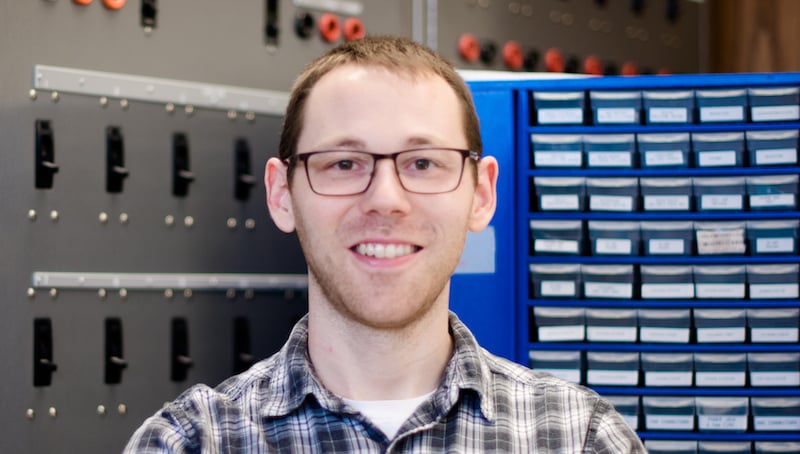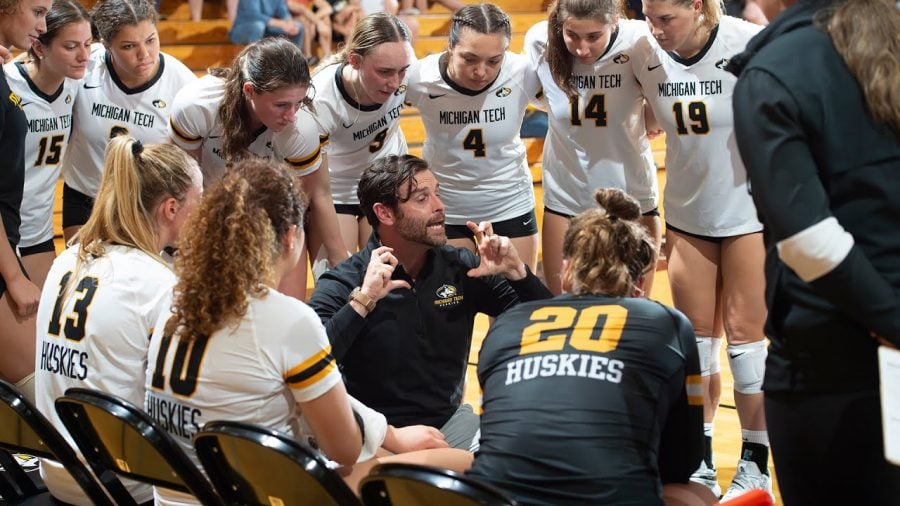
Matt Jennings will share his knowledge on Husky Bites, a free, interactive Zoom webinar Monday, 2/13 at 6 pm ET. Learn something new in just 30 minutes or so, with time after for Q&A! Get the full scoop and register at mtu.edu/huskybites.
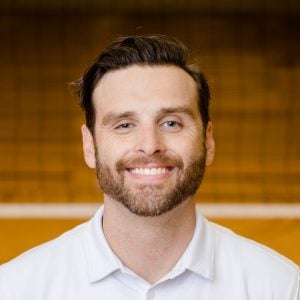
What are you doing for supper this Monday 2/13 at 6ET? Grab a bite with Dean Janet Callahan and Matt Jennings, Head Volleyball Coach at Michigan Tech. Joining in will be a former player, Jen (Jung) Lucas ’09, and a current player, Kaycee Meiners.
Women’s Volleyball first started at Tech in 1975. Jennings is the seventh Women’s Volleyball coach at MTU, having led the team over the past decade to the most wins of any previous coach. He is credited with transforming the program (In his first year as coach in 2012, the team at MTU went from a 2-25 record to a 12-19 record) but by building the team with an important emphasis on full athlete development. The team’s overall record for 2022-23 season: 20:10.
In addition to his job as coach, Jennings teaches Sports Psychology at Michigan Tech. During Husky Bites, he’ll talk about balancing academics and athletics, and what players bring forward—communication, teamwork, handling pressure, and resiliency.
Jennings earned a bachelor’s degree in Business Administration and Political Science from Augustana College in Rock Island, Illinois in 2003. He earned an MBA from St. Ambrose University in Davenport, Iowa in 2006.
“There is no doubt that, with some sweat, sacrifice, and teamwork, the volleyball team can find success on many levels.”
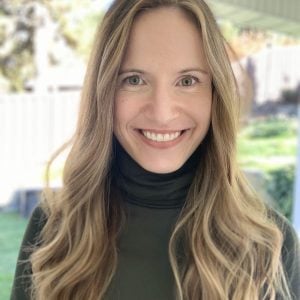
Alumna Jen (Jung) Lucas ‘09 was a middle blocker on Tech’s women’s volleyball team while earning her degree in Scientific and Technical Communications at Michigan Tech. She’s now back on campus again, this time working as MTU’s assistant vice president of alumni relations.
As a volleyball player at Michigan Tech, she won the GLIAC Commissioner’s Award, presented to athletes that excel both in the classroom and on the fields of play. Lucas was chosen as Team MVP in 2006 and 2008; named the Raymond L. Smith Award Winner for Outstanding Senior Female Student-Athlete in 2009; earned All-GLIAC all four years of her career, earned All-Region and All-American accolades her senior year, and was named GLIAC North Division Volleyball Player of the Week a few times in her tenure. And she still holds a few school records (or the 2nd spot) in various blocking categories.
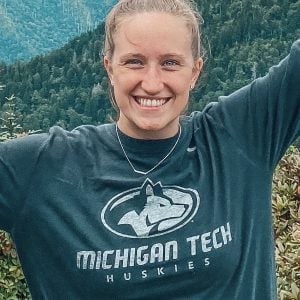
Sciences (Pre-Veterinary Studies) at Michigan Tech
“I’ve followed how well Matt’s led the program since he started here a little over a decade ago,” says Jung. “It’s so exciting as an alumna to see the program and current players succeed.”
In addition to some great memories and stories, during Husky Bites Coach Jennings and Jen will share what it’s like being an athlete at Michigan Tech, where the MTU volleyball program has been—and where it’s going next.
Coach Jennings, how did you first choose coaching and why volleyball? What sparked your interest?
Sports play a huge role in my family, my sister was a record setting setter at the D1 level and spent time coaching at the high school and youth club level; my grandfather played in the NFL for 8 years after his time as a lineman at Ohio State; and my mom was a three-sport athlete at Wisconsin Whitewater. She met my dad after college, while coaching and teaching at a high school outside of Chicago. Sports and coaching are in my blood!
I first started coaching in 2004 at a small college in Iowa. I had been working in Chicago in finance at the time when my college coach called me and told me about the position—head coach on the men’s varsity and women’s varsity teams, but paid like a graduate assistant. I took it, as I was becoming discouraged with my time in the finance world. I earned my MBA there while turning around the men’s team over a two-year span.
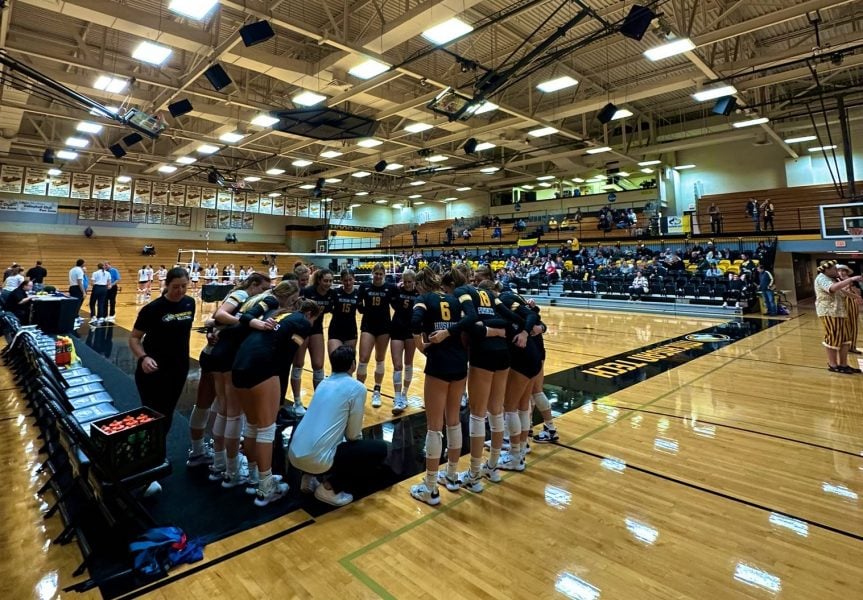
After I earned my degree I took a shot in the contracting and finance worlds again—and was rescued by my sister’s coach at Eastern Kentucky University in 2007, where I was brought on as the first assistant. I’ve been coaching ever since.
Hometown, family?
My wife Mary and I are the proud parents of three. We came here together in 2012 from Pittsburgh and were married in Copper Harbor. Jack Henry is 5, Ellenor James is 3 (and in charge) and Connor Evan is 10 months. All three are native Yoopers!
I grew up in suburban Chicago and in the city itself. I’ve also lived in Pittsburgh, Richmond, Kentucky, the Quad Cities (Illinois & Iowa), and Orange County California. I’ve lived here in Houghton for over a decade now. My extended family is mostly based in Chicagoland, although my only sibling, Kelly, and her family live outside of Boulder, Colorado.
What do you like to do in your spare time?
With three little ones under 5 years old, the concept of free time is relative these days. Fair to say I spend most of it loving and caring for my family. Outside of that, I love to travel, read, listen to music, and follow all things Chicago sports (besides the White Sox) and Buckeye football. I also enjoy spending time outside in the summer months in the Copper Country.
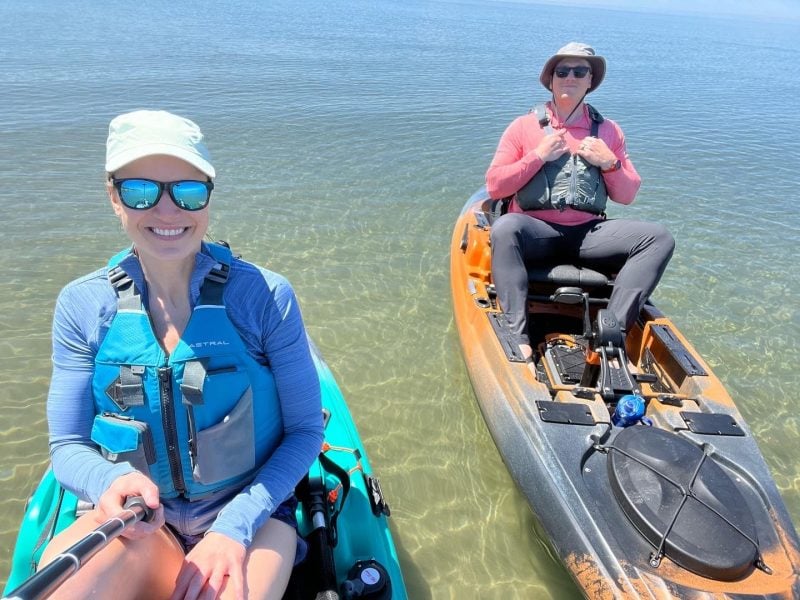
Jen, how did you first choose Michigan Tech? What sparked your interest?
I was part of the small percentage of my graduating class from Tech with a non-engineering degree, Scientific and Technical Communication (STC) from the Department of Humanities, but I’m forever grateful that I chose to attend and play volleyball at Michigan Tech.
As a junior in high school, I was recruited to play collegiate volleyball by a variety of D1 and D2 programs, Tech being one of them. I knew that while volleyball was a passion of mine and was opening the door to a future I would have never had in my grasp without it, it also had an expiration date: after college, volleyball would no longer be a dominating factor in my life. I would need to be prepared to enter the real world as a professional.
So beyond the usual factors one considers when being recruited (what schools offered my degree of interest, and how did I fit into their volleyball program) I considered which University would set me up for the best success after graduation. Michigan Tech clearly was the top choice considering that, with its impressive rankings, job placement percentages, reputation, I also loved the community and culture on campus. At age 17 I made one of the best decisions of my life and committed to Michigan Tech. I am still thanking “younger me” for being so smart!
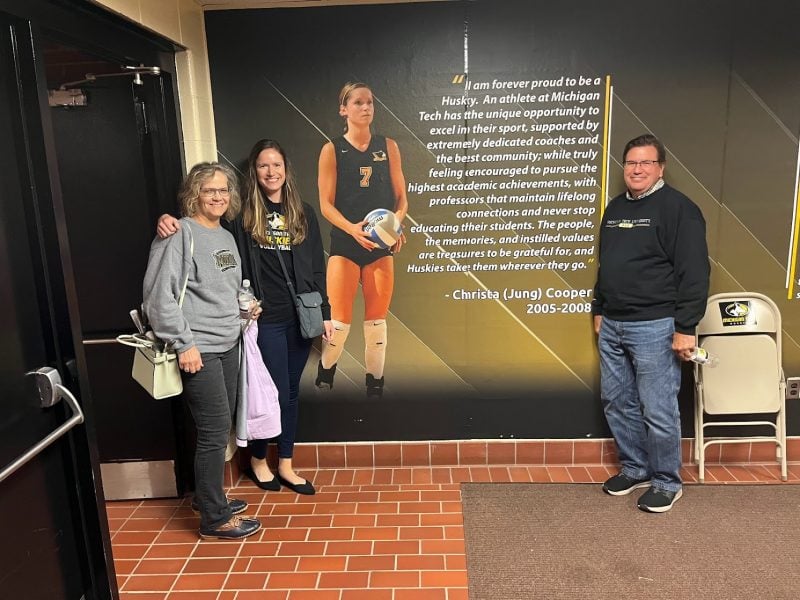
Hometown, family?
I was born in Nebraska, but spent most of my life in Minnesota. I have a twin sister (who also played volleyball with me at Michigan Tech) and we have 3 younger siblings. I met my husband, Stephen (who went to Iowa State), while living in St. Paul, Minnesota after graduation. We lived in Minneapolis for a few years and then in Salt Lake City for nearly 3 years until we moved to Houghton a year ago for my current role as Assistant Vice President of Alumni Engagement here at Michigan Tech. Though Stephen didn’t attend Michigan Tech, he has loved living in the UP.
Any hobbies? Pets? What do you like to do in your spare time?
No pets yet (besides our robot vacuum we call “Richard”). Stephen and I like to stay active outdoors in all seasons whether that be hiking, biking, snow shoeing, kayaking, etc. I do hope to learn how to cross country ski one of these days as well. I enjoy watching and discussing all sports, but especially volleyball, football, and hockey. We also enjoy good food and drinks, so whenever we are traveling for work or for fun, we like to try different restaurants or local favorites.
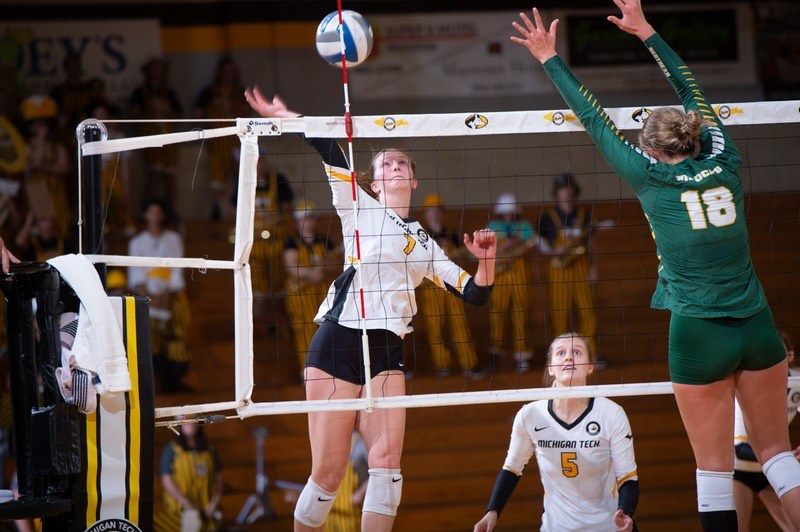
Kaycee, how did you first get into volleyball? What sparked your interest?
I first got into volleyball by watching my sisters, who were in high school at the time, we would play outside as a family often and watching my sisters be successful on our high school varsity team made me want to be like them. Once I started playing though I instantly fell in love with it and never looked back, I played soccer as well when I was younger but ended up quitting to really focus on volleyball because the more I played the more I realized I wanted to take my game further and into the college level.
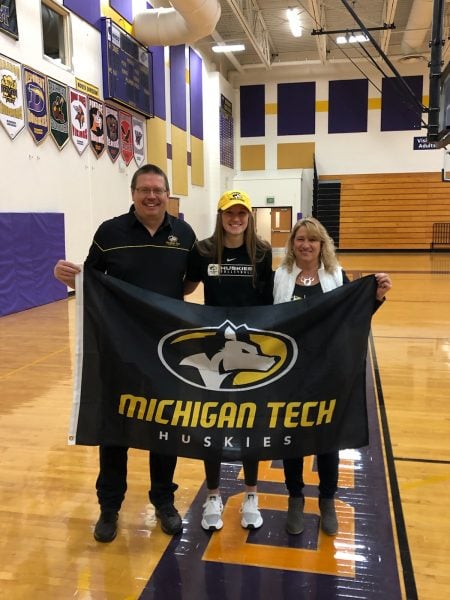
Hometown and family?
I grew up in the town of DeForest, Wisconsin in a family of five. My parents, Joan and Dan Meiners are the biggest supporters of my volleyball career and continue to support me in everything I do. I have two older sisters who are both happily married and my biggest role models in life. My oldest sister and her husband are the parents of two little ones, a three year old and a two month old, who I absolutely love and adore.
What do you like to do in your spare time?
Outside of school and volleyball I enjoy reading, traveling and spending time with my family and friends (especially my niece and nephew!). I also enjoy volunteering at the local animal shelter and have on campus jobs that keep me busy but involved with life in Houghton! I don’t currently have a pet in Michigan with me, but back at home my family has a dog who I look forward to seeing every time I go home!
Read more
MTU Spirit Times Two: Q&A with the Jung Twins
Shout Out: Matt Jennings, a Barrington High School alum who coaches volleyball
